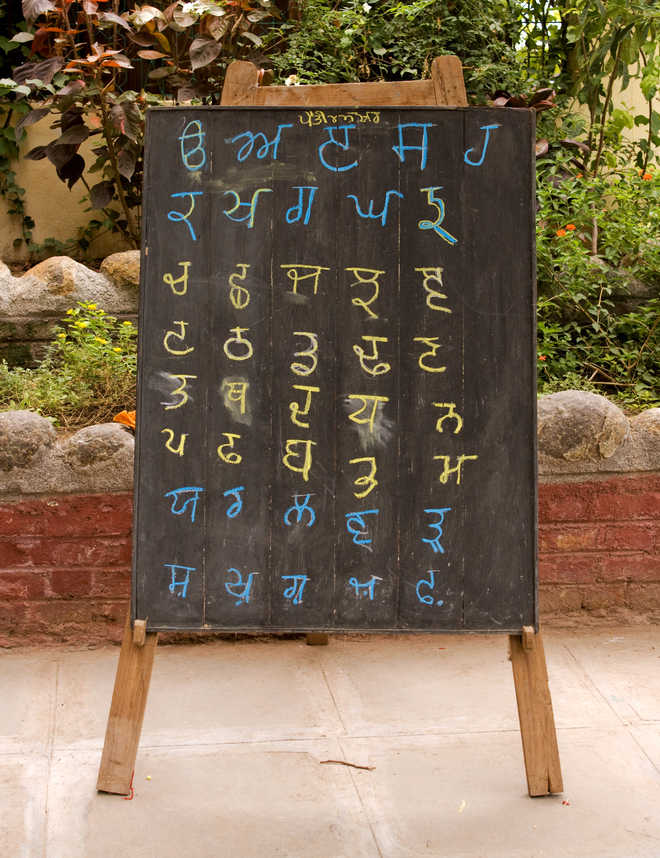SANDEEP SINHA
“Shukra hai rabba, sanjha chulha baliya,” sang the famous singer Reshma the title song of a TV serial by the same name. One was reminded of it after reading in the columns of this paper the state of Punjabi language. For someone from outside the state, introduction to the Punjabi language was through popular culture in the form of TV serials in the good old days of Doordarshan that were very popular.
It was pure delight to watch Gurdas Maan sing “Dil da mamla hai” when the sarkari channel used to telecast an entertaining New Year eve programme. Much later, I saw Jasbir Jassi sing live, “Dil le gayi kudi Gujarat di”, and the great Kuldip Manak his kaliyans.
The connection was broken until I landed in this part of the country. Sometimes as I would ruminate over my nomadic ways, a colleague would console me saying, “kaun kisi da khanda hai, dana-pani khinch ke le aanda hai.”
For someone who thought it was the Punjabi verve that was evident in its culture, it was actually disappointing to learn that the language is languishing, especially when popular culture can’t seem to do without it. Bollywood film songs seem incomplete without Punjabi tadka and the community and its cuisine is found everywhere.
I once happened to be in Talwandi Sabo at a tractor mela. Surrounded by rustic folks who did not understand Hindi or English, it was an uphill task to communicate. But aided by their stubbornness to inform, we broke the sound barrier. Though I could not learn to write or read Punjabi, I began at least to understand the language somewhat.
When I would speak in Hindi, I would invariably be asked, “Tusi Cant te ji?” (Are you in the Army?) I would have to then explain.
The languishing of the language is a bit like the social media syndrome where everybody seems to be connected in the cyber world but not quite in the real world. This “dumbing down” of the language, or for that matter any other language, is of concern. One does not agree with the methods adopted by those who want signboards in Punjabi, but probably the aggression is more a call for intervention than high-handedness.
There are people like Karnataka-born Prof Pandit Rao Darennavar, working for the promotion and preservation of the language. Interestingly, the migrants are contributing their bit to preserve the language. Their children study in government schools where Punjabi is taught and pick up its nuances.
While getting my car serviced in the Industrial Area, I happened to see a little girl man a roadside tea stall outside the gate of the Hyatt hotel. I chatted her up. She was 12-year-old Rekha, a student of a government model school in Sector 20. Originally from Azamgarh in Uttar Pradesh, Rekha studies all subjects, including Punjabi. Playing “panch goti” while making tea, she explained to me how the game is played and also that she would like to do something for the community when she grows up.
And there would be many more Rekhas in Chandigarh and Punjab, whose parents, unable to bear the high tuition cost of private schools, must be sending them to government schools where Punjabi is taught.
It might be an anachronism but then it was Max Mueller, a German, who turned out to be a great Sanskrit scholar and an Indology scholar. Rekha may not turn out to be a Max Mueller, but it shows that there is still hope.
Language is seen in terms of culture development and Sanskrit and Urdu, once the favoured language, face similar disinterest due to lack of patronage and scope. English is the lingua franca as it is seen as a passport to better avenues. So are foreign languages like Chinese, Korean, Japanese and Spanish. The popularity of the International English Language Testing System (IELTS) is itself a good indicator where priorities lie.
The Punjabi language, rich in content and appeal and with a history of great literature, is still not without hope. After all, Punjabiyan di battery charge rehndi hai?
Unlock Exclusive Insights with The Tribune Premium
Take your experience further with Premium access.
Thought-provoking Opinions, Expert Analysis, In-depth Insights and other Member Only Benefits
Already a Member? Sign In Now










